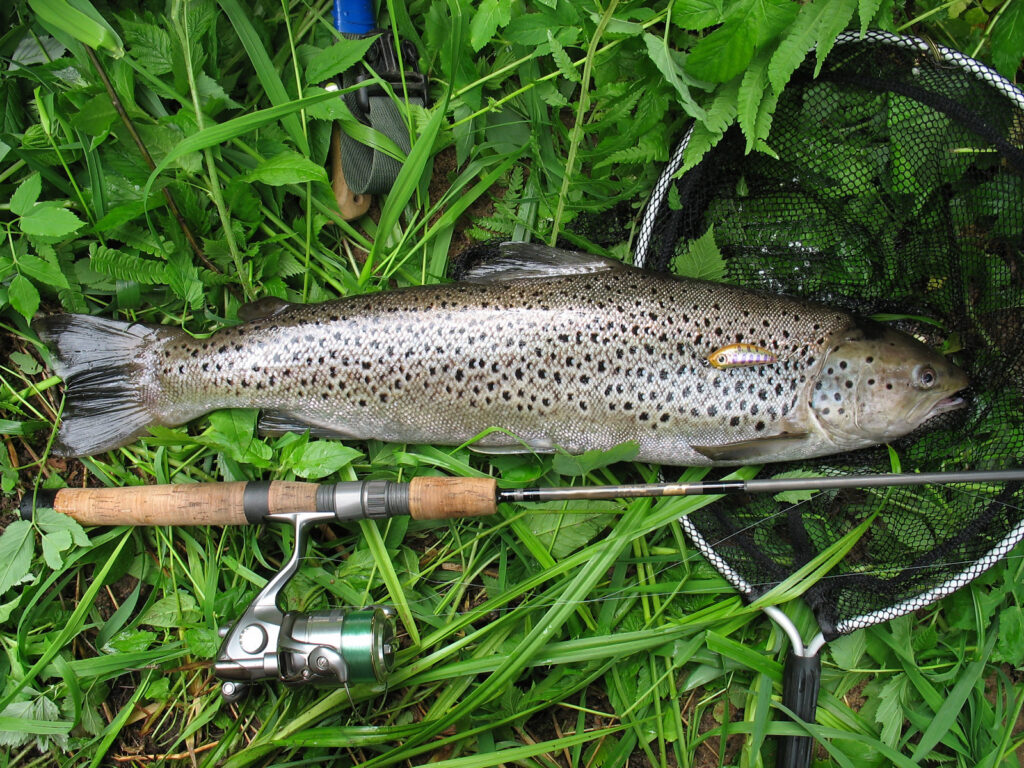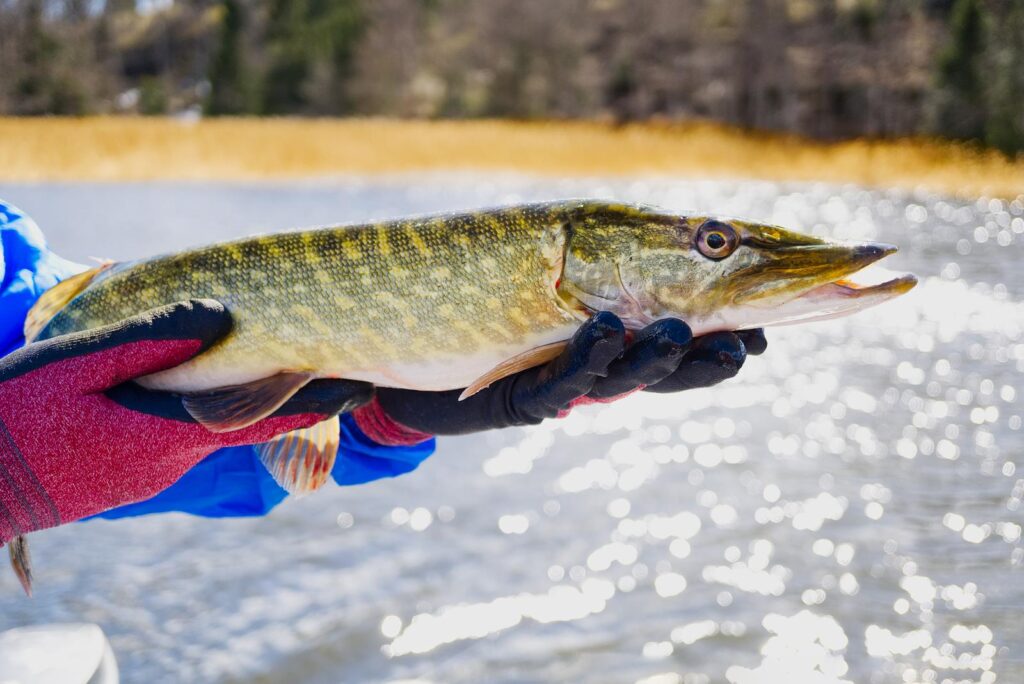Catch and release fishing is a type of recreational fishing where, as the name suggests, fish caught by an angler are released, instead of being kept to eat, as trophy fish, or for any other purpose. While this is a great method in terms of conservation, there’s a lot to consider before you practice this type of fishing.
Without the right practices, fish can still die – even if you have the best intentions when releasing them back into the wild. So, it’s best to learn how to catch and release fish properly if you want them to have the best chance at surviving, growing, and breeding.
Pros Of Catch And Release
Let’s start with the pros of this fishing method to give you an idea of the positives of releasing fish that you’ve caught.
Conservation and sustainable fisheries
One of the main reasons why it’s a good idea to release fish you’ve caught is for conservation. Due to the popularity of recreational and commercial fishing, many areas are facing a reduction in fish populations. If you want to practice recreational fishing while minimizing your impact on the environment (and the fish population), one of the best ways to do this is to release fish that you’ve caught.
Doing this not only gives the fish that you’ve caught a greater chance of surviving, but it allows it to reproduce and maintain a healthy population – thereby preserving aquatic ecosystems.
Many fisheries actually encourage and even enforce this type of fishing in order to protect endangered species and give populations of fish a better chance to thrive.
Promotes responsible angling
Another big pro of this type of fishing is that it encourages responsible angling. With more anglers actively releasing fish back into the wild, more people will see the benefits of this technique, ultimately reducing the aimless catching and killing of fish.

In addition, with more people practicing this type of fishing, others can learn how to do it properly, without causing further harm to the fish.
Scientific data collection
Catch and release allows scientists to collect data from different fish species without removing them from the ecosystem entirely. This is ideal for research and insight into the fish population, ecosystems, and migration patterns in different areas.
It doesn’t just come down to only scientists catching and releasing fish. There are many citizenship programs for anyone to report fish caught in different locations to scientists and conservation organizations for further data collection.
Recreational enjoyment
As we all know, fishing is a very popular sport. If everyone just kept their fish all the time, however, we’d have some serious problems with declining fish populations.
Catch and release practices give people the opportunity to experience the enjoyment of recreational fishing and appreciate the beauty of different fish species, all while minimizing their impact on the environment and leaving fish for others to catch.
Boosting fish size and population
Fish released back into the wild stand a chance of growing and breeding. There are fishing regulations and guidelines applied to fish of certain sizes, which helps to maintain a balanced ecosystem and boost fish populations.
For example, some locations have laws on both the minimum and maximum sizes of different types of fish species anglers are allowed to keep. Any fish caught outside of those guidelines must be released to allow them to grow and – hopefully – breed.
Cons Of Catch And Release
Of course, there are still cons to this method. It’s important to understand these cons to make a more informed decision, as well as to learn how to practice this type of fishing safely.
Post-release mortality
While pretty much all anglers who practice this type of fishing aim to release fish unharmed, there are still factors that can affect a fish’s mortality rate after it has been released.
Fish may experience injuries or stress when they’re caught. This doesn’t always mean that the fish will die after you release it, but there are a variety of factors that can influence their mortality rate after you’ve caught them. These include:
- How you’ve handled the fish.
- The severity of the fish’s injuries.
- The fish species.
- How tired the fish is after it has been caught.
There is also the possibility that the fish could experience what’s known as barotrauma, which is a buildup of gases in their bodies that make it extremely difficult for them to swim back down. This can happen to fish caught deeper than 30 ft.
So, if you’re fishing in deep water it’s a good idea to look for these signs and ensure you release the fish properly (with recompression tools) to allow it to survive. It’s also important to release the fish quickly.
Some of the signs of barotrauma include bulging eyes, lifted scales, a bloated midsection, sluggish swimming, and the fish’s stomach protruding from its mouth.
Disruption of spawning and nesting
Even though you may release fish after catching them, it can still impact critical life stages or spawning and nesting behavior. If you catch the fish during an important stage of their life, you could disrupt their chances of reproduction, possibly affecting future generations of fish.
One way to prevent this negative impact is to be aware of spawning behavior in specific areas. This will help you to avoid fishing in those areas during those periods and therefore give the fish the best opportunity to increase their population.
Hooking and handling injuries
We’ve already discussed the fact that the way you handle fish can cause them to have lower chances of survival after they’ve been released. It can also cause them to be injured. While these injuries might not kill the fish outright, they can impact their ability to catch prey or avoid predators. This is why it’s so important to handle fish with care.
Of course, the hooks used when catching fish can also cause severe injuries. Even if the initial injuries aren’t severe, some anglers may not know how to remove the hook properly, causing those minor injuries to become a serious threat to the fish’s life.

It may be unethical
Possibly one of the biggest cons when it comes to catching and releasing fish is that it may be considered unethical or controversial. Fish do feel pain, meaning hooks will hurt them. When you look at it in this light, you may consider it cruel to want to catch fish simply for your own enjoyment.
Animal rights organizations, such as PETA, have been spreading awareness about how bad catch and release fishing can be. And some countries, including Germany and Switzerland, have even banned this type of fishing, as it’s seen as inhumane due to the harm caused to the fish for no good reason.
Catch/Release – Best Practices
If you want to have as small an impact as possible – both on the fish and its ecosystem – you’ll need to follow good practices. These include:
1. Proper handling techniques
- Whenever you handle a fish, it’s important to have wet hands. This can prevent the fish’s protective mucus from being rubbed off. Consider wearing gloves when handling fish as this can help.
- Aim to keep the fish in the water. If you have to remove it, it’s best to keep the time it spends out of the water under 60 seconds.
- When you hold the fish, you need to give it proper support across the length of its body. Don’t hold the fish horizontally, by the lips, or only by the tail. It’s also a good idea to cradle it in the water to maximize support.
- Handling fish gently minimizes harm. If you squeeze it too hard, you could damage internal organs or muscle tissue.
- Exhausted fish may drown if they’re too tired to swim and get water flowing through their gills. If your catch is tired, hold the fish in the water, facing into the current. This will speed up its recovery and give it the energy it needs to swim off safely.
2. Minimizing fight time
- Use the right type of rod, reel, and other gear to avoid tiring the fish out. You should be able to balance your enjoyment with prioritizing the fish’s well-being.
- Don’t try to extend the fight in any way either. If you can reel the fish in safely without snapping your line, you should aim to catch the fish quickly.
3. Equipment and tools for safe release
- Use hooks that will do minimal damage to the fish. Barbless hooks and circle hooks are two great options and can make it a lot easier to remove the hook once you’ve landed a fish.
- Don’t choose stainless steel hooks, as these won’t rust and fall out if you can’t remove them. While other hooks still take a long time to rust and break, using hooks made from other materials will give the fish a better chance at survival once released.
- Use the right net to land the fish. A wet, rubber landing net or soft knotless mesh net will be less likely to injure the fish.
- Use a dehooker to make it easier to remove the hook and release the fish without taking it from the water. This will also ensure you handle the fish gently.
4. Selective harvesting
- While you won’t release every fish that you catch, it’s important to know which ones you can and can’t keep. It’s wise to stay up-to-date with the area’s fishing regulations and guidelines.
- You should also be aware of when you can and can’t fish in certain areas to ensure you give the fish the best opportunity to breed and grow.
Ethical Considerations and Angler Responsibility
At the end of the day, it’s up to the angler to be responsible and pay attention to fishing regulations. Before you set out, you must be aware of the rules, know how to handle fish correctly, and what equipment you should use.
You’ll also need to consider your own ethical standpoints regarding the cruelty aspect of recreational fishing. If you think it’s best not to hurt the animal, then you can always find another hobby in nature such as canoeing, camping, etc.
Finally, it’s your responsibility to follow other good practices like minimizing waste. Leave the beach/banks as you found them (or even better than you found them) by picking up waste. This can have a positive impact on the environment and the aquatic ecosystem – thereby helping fish populations to thrive.
FAQs
How ethical is catch-and-release fishing?
The ethics of catch-and-release fishing is a point of contention. Some animal rights organizations argue that it is unethical due to the pain the animal feels and the potential for fish to die after being released. However, it is considered an ethical way to practice the sport of fishing in most locations, as it takes fish populations and ecosystems into account.
Do fish recover after catch and release?
Released fish do recover in most cases. However, it’s important to handle the fish correctly, as well as utilize all the right fishing gear to minimize the animal’s stress and chance of injury.
Do fish feel pain with catch and release?
Yes; fish do feel pain when they’re hooked. This has been proven in a variety of scientific studies.
